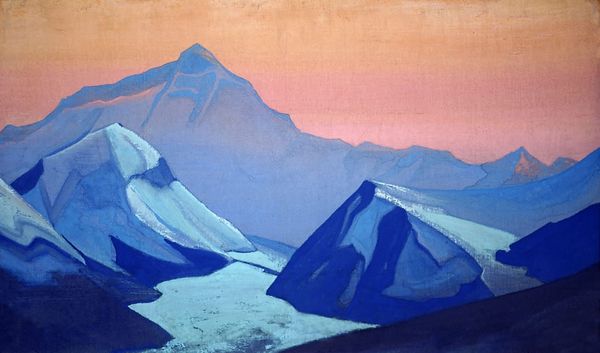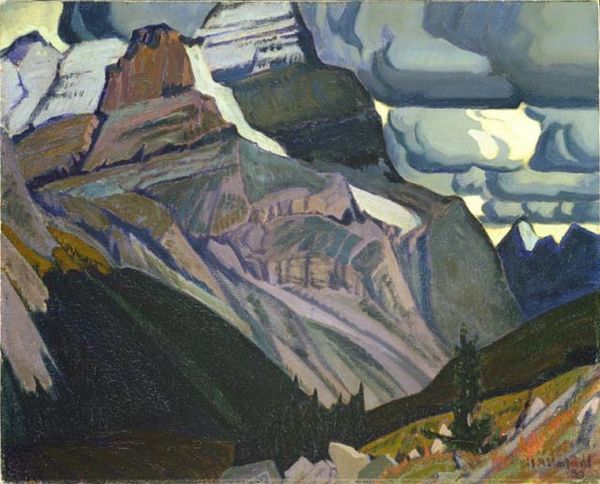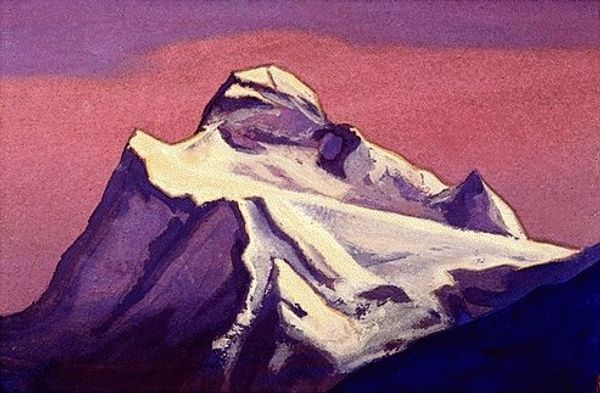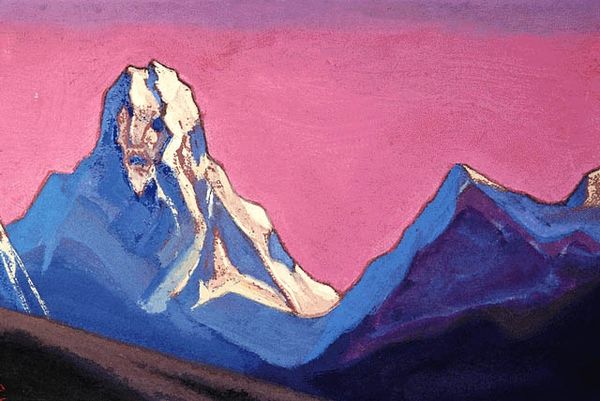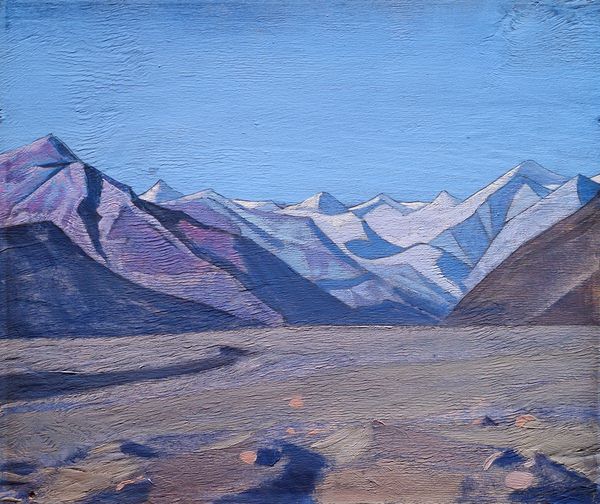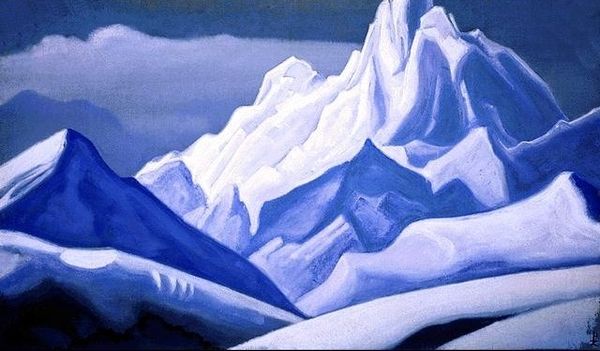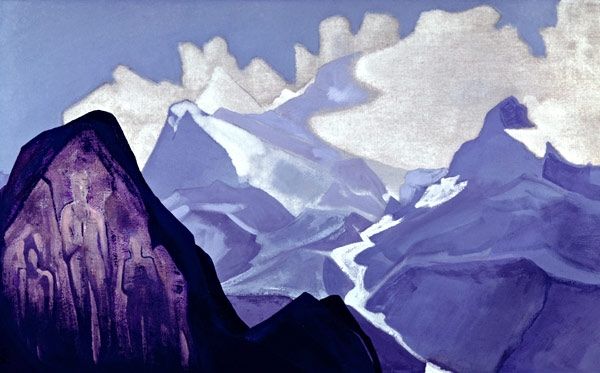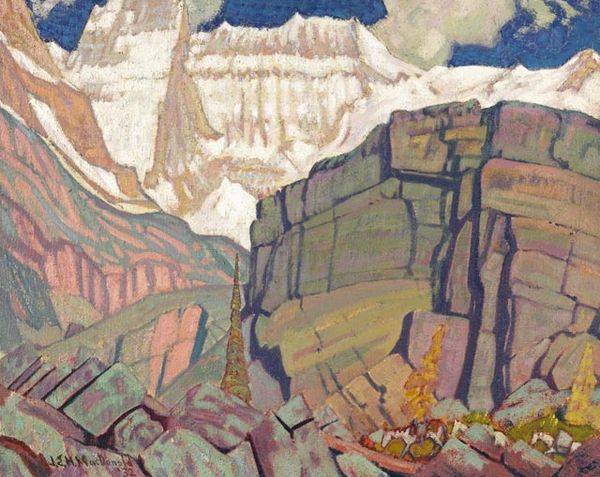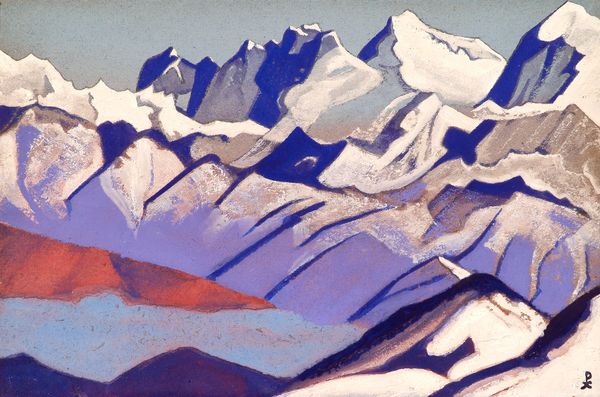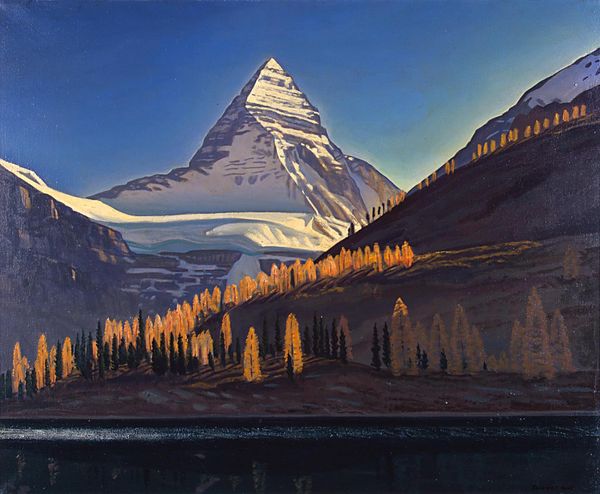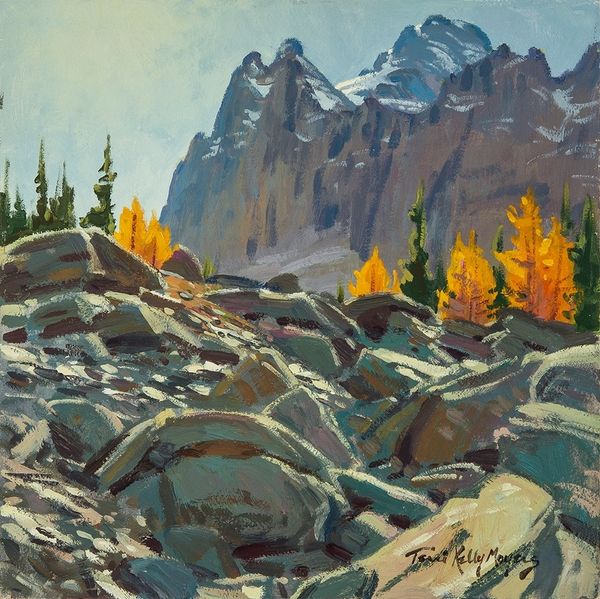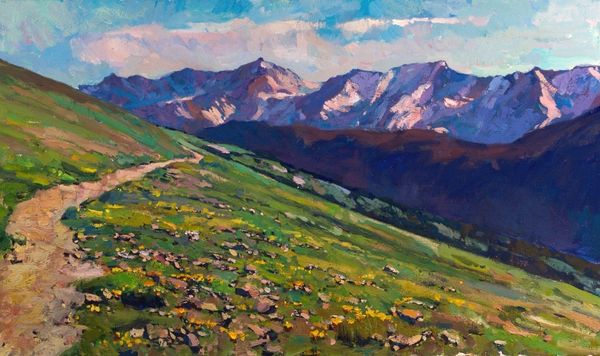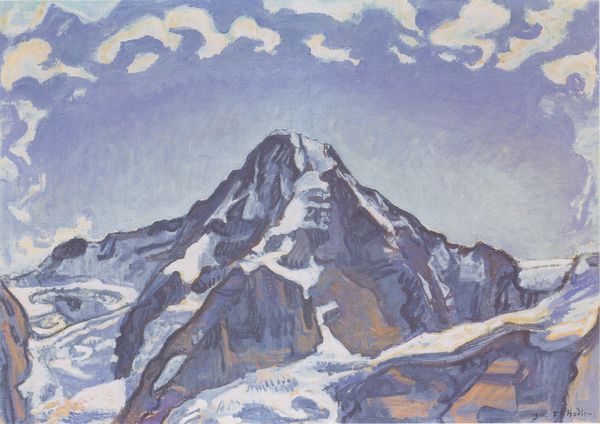
Copyright: Public domain
Editor: Here we have J.E.H. MacDonald's "September Snow on Mount Schaffer," an oil painting from 1929. It has a really striking quality, doesn't it? The cool tones give a sense of vastness and silence. What jumps out at you when you look at it? Curator: The sheer materiality is compelling. Consider the layering of oil paint, how MacDonald builds up texture to represent the rough surfaces of the mountain. We're not just seeing a mountain; we're seeing the *making* of a mountain, through the application of labor and material. What about the economic context of producing these landscapes? Editor: That's fascinating! I hadn't thought about the "making of" aspect. Were these materials easily accessible, do you think? Did that affect the accessibility of landscape painting in general? Curator: Exactly! Oil paints, canvases – these were commodities. Access to them dictated who could participate in this form of artistic expression. And consider MacDonald’s place within the Group of Seven, explicitly trying to define a national Canadian identity, they promoted particular narratives tied to the resources of the land and the labour involved in their extraction. How do those narratives intertwine, for instance? Editor: That's a complex point, about the Canadian identity! So the paintings weren't just aesthetic exercises, but almost political statements of Canadian industry. Curator: Precisely! It compels one to consider what socio-political messages can be drawn from that fact and its impact on Canadian culture at the time and beyond. Editor: That shifts my perspective entirely. It’s not just a pretty landscape, but a window into the politics of material and production in early 20th century Canada. Curator: Indeed. Analyzing the materials and their production helps us to understand whose stories are being told, and whose are being left out. It is truly thought-provoking.
Comments
No comments
Be the first to comment and join the conversation on the ultimate creative platform.
